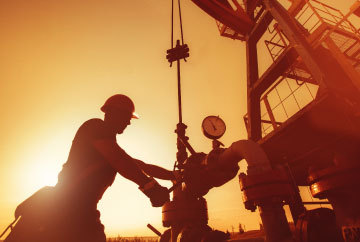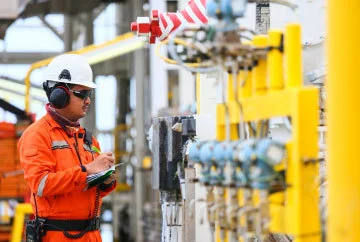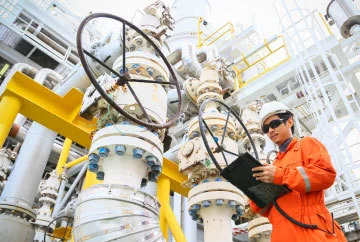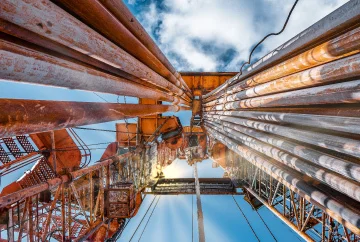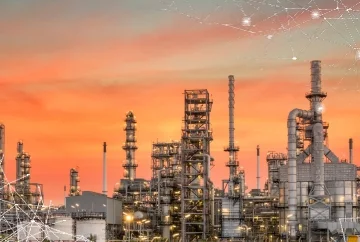Field Productivity Optimization
The Oil and gas sector is leveraging digital twin technology to optimize field productivity. The digital twin journey helps companies in
five stages: Organize/execute, improve asset reliability, configuration management, operational insights optimization, and maintain $ visualize information.
After successfully implementing digital twin technology, an
oil and gas company started production ahead of schedule and within the allocated budget. They also saw a 30% reduction in information search time, a 70% reduction in data exchange time, and a 25% improvement in document coordination efficiency.
IoT deployment in the upstream oil & gas industry resulted in reduced consumption and emissions produced throughout the process. With the help of IoT, the physical requirement of labor decreased drastically and thus optimized production efficiency by cutting down human intervention.
Predictive Maintenance in Oil and Gas
Predictive maintenance technology is used to cut losses resulting due to unplanned downtime. If the downtime lasts for just
3.65 days, the losses can increase to $5 million.
An offshore
oil and gas company leveraged predictive maintenance technology and reduced its downtime by 20%. Also, lesser downtime helped them increase their production by more than 500,000 oil barrels yearly.
Example: Predictive maintenance solutions can help in Oil & Gas Pump Condition Monitoring. The solution looks for issues such as leakage. It keeps track of the variables of the gas pump in real-time. If the system detects a potential leak, it generates a report and immediately alerts the technician. The system's historical data clubbed with real-time data can help run simulations of possible failures and prepare the company for future maintenance activities.
Digital Prototyping
Case Study: Shell holds the deepest oil and gas drilling station globally, located in the Gulf of Mexico. Shell wanted to build a real-life buoy that featured 222 pieces of syntactic foam, and all needed to fit together in sequence. Using 3D printing to print a scaled-down plastic version, they understood design complexities and improvement possibilities. The 3D prototype helped Shell save $40 million by allowing the team to find design flaws early. Also, with the help of 3D printing, complex obsolete machine parts can be built, which would otherwise become a complex and time taking task.
Pipeline Monitoring
There are
2.5 million kilometers of hydrocarbon pipelines laid across the world. Transportation of oil and gas products becomes more effective and efficient with the help of these pipelines. However, natural calamities or human intervention can damage this network. Also, it is not possible to guard the entire network physically.
Thus, pipeline monitoring becomes essential. It helps to keep track of any leakages or hydraulic failures. The
Internet of things is the solution to this problem. It has a feature that offers real-time pipeline monitoring to help detect any leaks in the network during the supply process. IoT clubbed with intelligent sensors, and other intelligent devices are put across the entire network of pipelines to help detect the exact location of the leak.
Connected Workers
"Connected workers" are employees equipped with digital wearables which help them entirely use the data generated by these devices.
The World Economic Forum's White Paper on Oil and Gas Industry digital transformation suggests that by 2025, connected workers in the upstream and downstream operation could be up to 15% more productive than the non-connected workers. Schlumberger has already taken a step ahead. The company is using wearables based on Google Glass to improve the safety and productivity of its field employees. The solution is a part of a workflow management tool for oilfield workers. The glasses will help management optimize workflow by logging the time taken for each step as soon as it is completed. The glasses can help workers save time on routine tasks, such as completing checklists in the field.
Emission Modeling
The oil and gas sector affects the environment heavily due to the amount of hydrocarbons released into the air during the oil and gas extraction process. Since the
carbon emissions due to drilling, extraction, and transportation are massive, the industry is tasked with reducing carbon emissions. For example, 1 million tons of methane gas are released into the environment by the oil and gas sector in the US. Digital advancements can help in this matter.
Leveraging Internet of Things powered technologies, it will become easier to foresee pipeline leaks and quickly send a team for its maintenance. Similarly, simulation of emissions can be run using AI/ML, and data can be used to understand the reasons behind the emission. Once the reason is known, a solution could be put in place.
How to Build Your Digital Transformation Strategy in the Oil & Gas Industry?
The pandemic struck when the oil and gas industry was adjusting to the growing competition due to the alternative energy sources sweeping the sector's market. With many companies fighting hard to stay afloat amid the competition, the pandemic decreased the demand for oil and gas drastically. This led the top leaders and executives of the industry to further the wave of digital transformation in the oil and gas sector.
Strategy&'s research shows how to advance an effective digital transformation strategy. According to the study, companies in the oil and gas sector need to take a holistic approach to digital transformation. A holistic approach means covering the entire industry and not just certain parts. Digital transformation strategy must be such that it integrates all the operations in the industry.
From production sites and transportation to refineries for the end-product, every aspect of the industry must be considered to transform the industry's digital outlook holistically. The survey found that the top executives in the oil and gas sector have opted for technologies that combine data and analysis.
Against the backdrop of streamlining operations, maintenance, and asset allocation, the main motive is to enhance operational efficiency. These solutions improve the overall uptime and performance of assets, also improving the life expectancy of equipment. Asset management strategy insulates industries from market volatility by optimizing operations and reflecting long-term profitability.
The survey listed the top five technologies chosen by executives to create a diversified yet correct digital portfolio for their companies.
- Manufacturing execution system: It creates a link between individual pieces of equipment and the company's resource planning system to develop operational coordination.
- Cloud Computing: 79% of CIOs in the oil and gas sector want their company's IT culture transformed. This result shows the path for adoption of Cloud Computing is clear. For the oil and gas sector to truly unlock its digital capabilities, a central and easily accessible repository of data is needed. Cloud computing is the first step towards streamlining the operation in all the industry streams.
- Internet of Things: It will ensure seamless remote monitoring and efficient equipment integration. It will increase productivity, ensure workplace safety, and cut losses due to unforeseen leakages.
- Machine Learning: ML ensures the accuracy of data being studied and patterns being analyzed. It will help build a robust environment for predictive maintenance and thus reduce the downtime of various sections in the industry.
- Energy analytics: Usage of AI to study the data from the sensors and support energy optimization. Taking the right measure would decrease costs across company operations.
Today, the oil and gas sector's efficiency and sustainability challenges can be tackled by correctly implementing the above technologies. Thus, building the right digital portfolio is by understanding the true need of your company.
The Upside of Digitalizing Oil & Gas Value Chain
Digital and analytics-driven change can enhance the productivity of the entire oil and gas sector. The digital advancements have streamlined the operations in all three industry streams, making it ready to reap the benefits of the wave of digital transformation. The digital transformation has made the oil and gas sector safer to work in, increased productivity by digitally equipping the workforce, and increased revenue by decreasing the downtime and optimizing the operations in the industry. There are many upsides of digitalizing the oil and gas value chain, bringing out the most effective ones:
Click to zoom in
Improved HSSE
Health, safety, security, and environmental performance can be improved.
Advanced analytics can help identify risky behaviors based on a study of safety records built over many years. The oil and gas companies will predict safety hazards in the near future. Similarly, robotic process automation can help minimize human needs at dangerous places to work in, thus ensuring the safety of workplaces.
Augmented reality and Virtual Reality can help assess unforeseen situations entirely and develop a safer work environment for workers. Also,
AI & ML can be leveraged to run simulations of a hazardous work environment to help the workforce understand the entire workplace virtually
Improved Subsurface Planning
Data analytical techniques can help in better subsurface planning. If advanced data analytics supports new digital technologies and
more connected data platforms will help improve Well design, development planning, and many other things. This approach also helps in lowering the cost of production and increasing productivity. Also, with the help of
artificial intelligence, practical seismic imaging can be done in less time. Pinpointing the location of resource sites decreases the cost incurred on drilling as the sector won't have to drill blindly.
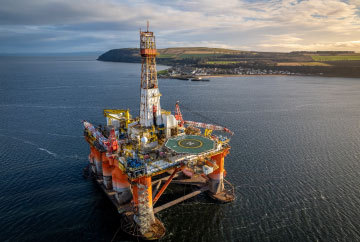
Simplified Operations and Increased Operational Accuracy
Automated work processes can simplify operations and increase operations accuracy in upstream, midstream, and downstream oil and gas sectors.
RPA, as of today, is well equipped to take up 80% of the tasks or even more. A digital-twin-design tool is being developed to eradicate the need for manual costing. Similarly, the same effects can be seen in predictive maintenance, pipeline monitoring, well design & construction, and remote monitoring. With the evolving digital era, the competition for maximum speed and accuracy is on.
Also, historical data can run automated simulations to help understand every aspect of a scenario and help leaders/executives make calculated decisions. Ultimately, automation and robotics will challenge the current status quo of the work performed and its management.
Secure Transactions ensured by Blockchain
Leveraging Blockchain technology and smart contracting will automate transactions and make the Oil and Gas global value chain more transparent. This will increase the trustworthiness of the system. Also, enabling blockchain tech will allow direct transactions between the value chain and the concerned parties, thus lowering the costs for all parties.
Due to the huge size of the oil and gas industry, the cash flow is sourced and moved between thousands of buyers and suppliers, increasing the chances of corruption. Smart contracts based on blockchain tech have the potential to end this. Also, cross-border transactions are common in the globalized oil and gas industry, and blockchain transactions can be used to process every such transaction securely.
Increased Revenue
The value derived from the digital transformation of the oil and gas sector is vast and waiting to be realized. Key findings from the world economic forum research suggest the
revenue growth of $2.5 trillion due to
digitalization in the oil and gas sector by 2025. Benefits of $640 billion worth can be created for the wider section of society by successfully digitalizing the oil industry. The wider section of the society includes customers, productivity improvements, reducing water usage, and lowering emissions. Several environmental benefits such as reducing CO2 -equivalent (CO2 e) emissions and avoiding oil spills can also be realized by digitalizing the entire value chain of the oil and gas industry.
|
Pointers
|
Upstream
|
Midstream
|
Downstream
|
|
Business Need
|
Improved data interpretation and speed of 3d Seismic imaging leveraging AI, ML, and Advanced Data Analytics.
|
Framing a digital strategy for the midstream sector majorly requires enhancements in transportation capacity and transportation infrastructure safety.
|
Increased asset utilization to cut down idle time and increase manufacturing efficiency. The efficiency of multi-plant sites needs to be increased through integrated value chains.
|
|
Use Cases
|
Seismic Image and Surveying
|
Columbia Pipeline Group’s Intelligent Pipeline Technology
|
Entering a new digital era.
|
|
Technology
|
Upstream
|
Midstream
|
Downstream
|
|
Artificial Intelligence
|
Seismic Imaging and Surveying of potential production land sites
|
AI Led Inventory Management
|
Extraction Pump Monitoring
|
|
Blockchain
|
Digitalization of Crude oil Transactions
|
Supply Chain Management
|
Multi-Product Supply Chain Tracking
|
|
IoT
|
Remote Monitoring of oil rigs.
|
Oil and Gas Pipeline Monitoring System
|
Corrosion Monitoring & Detection
|
|
Intelligent Automation
|
Rig and Well Drilling Automation
|
Logistics and Fleet Management
|
Procure to Pay Automation
|
|
Digital Twin
|
Drilling Process Planning Using Digital Twin
|
Connected Workers
|
Real-Time Detection of corrosion along with surveillance data
|
|
3D printing
|
Printing complex obsolete machine parts
|
Digital Prototyping of pipeline network to study and work on increasing its efficiency
|
Digital Prototyping of refinery system to understand complex machinery and address design faults
|
|
Immersive technologies
|
Predictive Maintenance
|
Safer Transportation through pipelines
|
Troubleshooting refining machinery
|
|
Cloud computing
|
Remote Maintenance
|
Connected Operations
|
Focused utilization of resources through data analytics
|
|
Robotics
|
Robotic Drilling
|
Automation inventory management
|
Refining Automation
|
|
Machine learning
|
Precision Drilling
|
Vessel Maintenance and Monitoring
|
Refinery and plant inspection
|
The Downside of Not Digitalizing Oil & Gas Value Chain
Unsafe Work Environment
An increase in Unsafe work conditions leads to serious fatalities and thus increased downtime of the industry. If the workplace's health, safety, security, and environment are not following standards set by the industry, no one would want to put their lives in danger. Also, since the oil and gas industry deals with hazardous elements, the constant health concern would negatively affect the workforce productivity resulting in overall revenue reduction.
The industry is already under immense pressure to tackle the increasing carbon emissions. If the industry doesn't adopt digital measles to cut down carbon emissions, regulatory pressures will bury those companies not following the environmental norms and regulations.
Click to zoom in
Difficulty in Surviving Growing Competition
The pandemic struck when the industry was already troubled by the competition it got from other energy resources in the market. The dramatically decreased demand bounced back but not to the pre-pandemic levels. Also, researchers suggest that this might be a permanent shift as industries have shifted and adjusted to employees working from home and people traveling less. Amid all this, if the industry needs to survive, it will have to move towards a digital transformation roadmap to increase production capacity by leveraging Cloud computing, AI, ML, Big Data, etc.
If it does not follow a strategic roadmap to diversify its digital portfolio,
it might not ever be able to revive itself. Also, due to alternative and greener energy resources, the competition in the market would take over quickly, making it more difficult for the industry to bounce back.
Increased Capital Expenditure
An oil and gas company not using digital technologies can be spending 20% more capital than a company that took the opportunity and diversified its digital portfolio. Research by
McKinsey & Co came up with this conclusion. So, now you see that not shifting to digital technologies to optimize operations and increase revenue may result in 20% more capital expenditure. The research also shows that the operations expenditure might increase by 3-5% if digital technologies are not adopted. Thus, the oil and gas sector need to go digital to survive the post-pandemic energy sector.
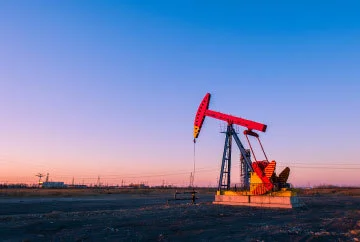
Future of Oil and Gas Industry
Digital Oil Field
The oil and gas sector has faced unforeseen challenges to unprecedented situations today. Before the pandemic struck, the oil and gas industry weren’t very secure. It has been facing formidable challenges in terms of regulatory pressure to tackle increasing carbon emissions and declining fuel prices due to the rise of alternative forms of energy. Once the pandemic struck, the living patterns of the world changed, and the price of fuel collapsed. The collapse led the industry to embrace the wave of digital transformation to stay afloat.
Click to zoom in
The effort to digitalize the sector should include:
- Focusing on business priorities by correctly utilizing data integration and analytics tech.
- Investing in human development and driving a culture that supports innovation and accelerates growth.
- Reforming the industry's digital data infrastructure by utilizing cloud computing the right way.
- Enforce an agile culture that accepts new-age thinking and promotes innovative design and solutions.
- Promote collaborative culture between different streams within the industry.




